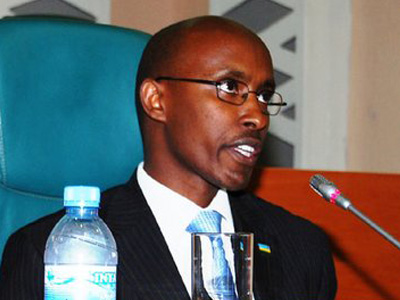I wrote a blog post a few weeks ago about a series of ways that Somalia could get broadband Internet connectivity. The article was reposted in several British, Somali and Kenyan online newspapers and was even criticized by a group of IT professionals in Somaliland. Given the hunger crisis outbreak in the Horn of Africa since then, I want to revisit the issue of connectivity in Somalia. It appears that mobile and Internet access is being recognized as a crucial need for humanitarian agencies.

Photo: AP
Information and communication technology (ICT) services during humanitarian crisis are much improved from a few years ago. Ushahidi and Frontline SMS have demonstrated the power of text services. Mobile money by MercyCorps in Haiti provided some organized method of food distribution and sustained economic activity. The government of Luxembourg recently partnered with the World Food Programme to test a connectivity kit to restore voice and text communications when power systems are wiped out during natural disasters. The list could go on.
A famine is different than other disasters, however. It does not affect ICT infrastructure directly as a hurricane or tsunami would. ICTs, then, can play a key role in organizing humanitarian relief efforts during a famine or crisis of any sort. In addition, ICTs can prevent famines because of the increased communication they can provide.
Remember economist Amartya Sen’s claim that a famine has never occurred in a working democracy? Famines are not so much a result of a lack of food, but rather a lack of effective distribution and communication. Democracies, with all their checks and balances of power, give enough voice to the people so that food is delivered when needed.
I argue that the amount of communication inherent in a democracy is the real key to the distribution and production of food that stops a famine. Public communication, not necessarily democracy, stops famines. In fact, what Sen defines as a “working” democracy, is simply a democracy where people of all social classes have a voice. A “working” democracy, then, is itself founded on the principles of the equality of communication.
It isn’t social media that will end the famine, but it is a process and steady cycle of communication between social groups. The more communication, the less social injustice—famine included. This type of communication can better occur with significant ICT infrastructure, which allows people in different locations to still communicate and share ideas.

One of the better ways to increase communication in a nation is mobile and Internet services along with IT infrastructure. I spoke with Bitange Ndemo, the Permanent Secretary of the Ministry of ICTs and a Director of the Communications Commission of Kenya (CCK), this week about possible broadband cable connections with Somalia. He was optimistic and outlined some possibilities, contingent on the Somali political environment. Ndemo explained that Kenya has broadband cables and a microwave just 2 km from the border with Somalia in Mandera. Both Kenyan and Somali telecoms have approached CCK, hoping to make a connection into Somalia. However, Kenya has declined as of now, for security risks. If they route the cable into Somalia then they risk privacy concerns and people cutting the cables. Given the political instability in Somalia right now, Kenya has yet to route the cable. Somalia remains unconnected to the rest of the East African Backhaul System, and still remains without any lighted fiber-optic cables, greatly limiting Internet usage and global communication.
It may seem strange for a government to invest in expensive broadband cables when its citizens are struggling to find enough food, but perhaps such an investment would end up ending its struggles with famine. Or, instead of the Somali government investing in IT infrastructure, they could grant easier regulations to private telecoms, and let them route and light cables throughout the nation. This would leave the government with less control over the telecommunications industry, but would save any financial costs.
Ultimately, though, the manner in which Somalia increases public communication is not as important as making sure that something is done to increase IT infrastructure throughout the nation. At the end of the day, food security concerns are tied to communication capabilities, and mobile and Internet infrastructure can play a significant role in decreasing the probability of famine.







































